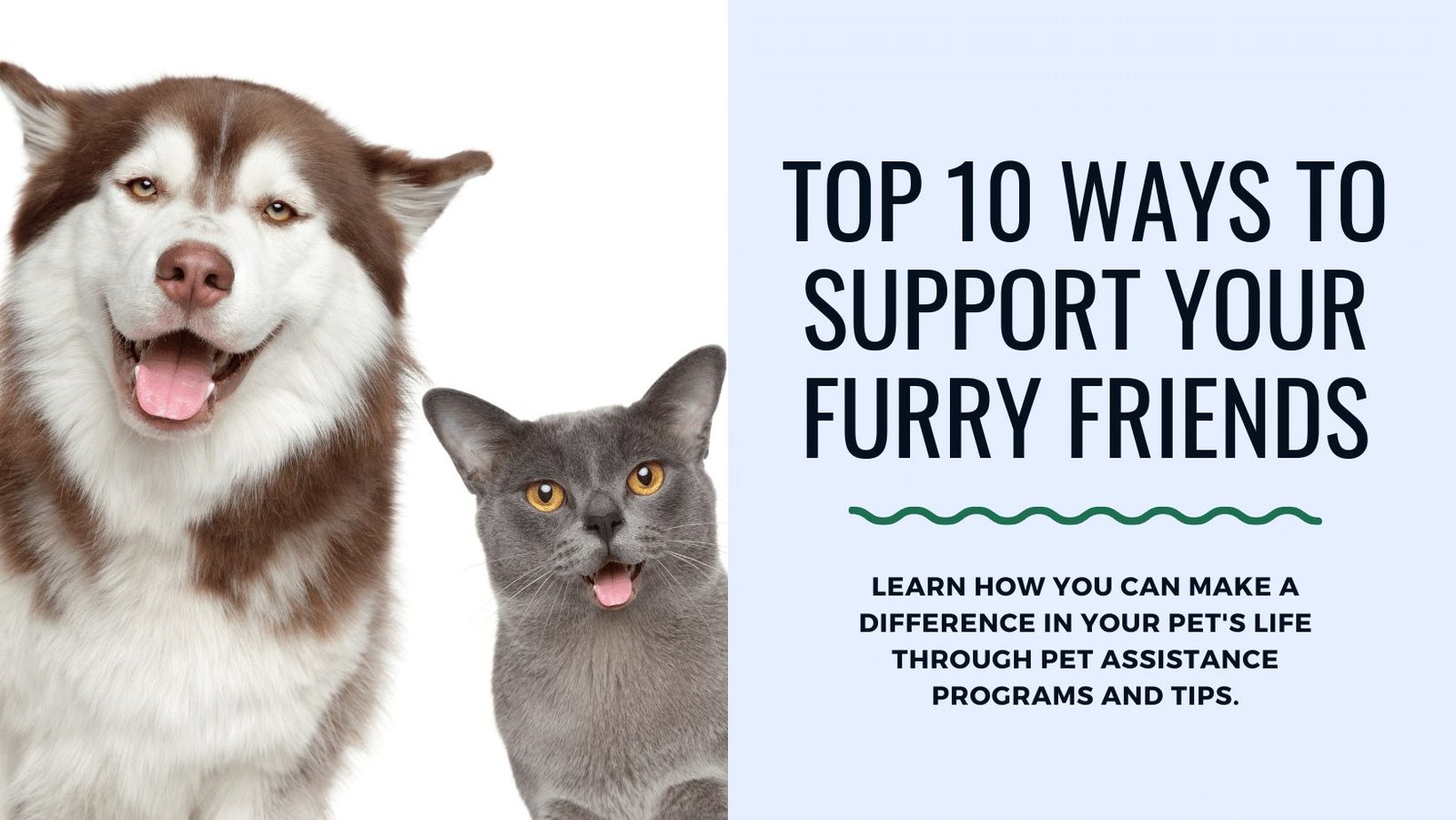Our beloved pets bring immense joy, companionship, and unconditional love into our lives. Whether you have a loyal dog, a curious cat, or a chirpy parrot, these furry companions become an integral part of our families. But did you know that supporting your pets goes beyond cuddles and treats? In this comprehensive guide, we’ll explore the top 10 ways to provide essential assistance to your furry friends. From emotional well-being to physical health, let’s dive into the world of pet care.
1. Emotional Support and Companionship
Pets thrive on love and attention. Spend quality time with your furry friend—whether it’s playing fetch, grooming, or simply snuggling on the couch. Your presence is their emotional anchor.
2. Regular Veterinary Check-Ups
Just like humans, pets need routine health check-ups. Regular visits to the veterinarian ensure early detection of any health issues. Vaccinations, dental care, and preventive measures are crucial for their well-being.
3. Balanced Nutrition
A balanced diet is essential to overall health. Consult your vet to choose the right food for your pet’s age, breed, and specific needs. Remember, treats are delightful, but moderation is key.
4. Exercise and Playtime
Physical activity keeps your pet fit and mentally stimulated. Take your dog for daily walks, engage your cat with interactive toys, and provide ample playtime for your feathered friends. A happy pet is an active pet!
5. Pet-Proof Your Home
Create a safe environment by removing potential hazards. Secure electrical cords, keep toxic plants out of reach, and ensure your pet’s living space is comfortable and clutter-free.
Also Read: Embracing Companionship: How Support Pets Enhance Our Lives and Well-being
6. Grooming and Hygiene
Regular grooming not only keeps your pet looking adorable but also prevents skin issues and matting. Brush their fur, trim nails, and maintain oral hygiene. A clean pet is a healthy pet.
7. Microchipping and Identification
It’s important to properly identify your pet in case it gets lost. Microchipping provides a permanent way to track your pet. Also, ensure they wear a collar with an ID tag containing your contact information.
8. Socialization
Expose your pet to different people, animals, and environments. Socialization reduces anxiety and fear. Attend pet-friendly events, visit dog parks, and organize playdates.
9. Pet Insurance
Unexpected medical emergencies can strain your finances. Consider pet insurance—it provides peace of mind and ensures you can provide the best care without worrying about costs.
10. Emotional Support Animal (ESA) Certification
If you or a loved one faces emotional or psychological challenges, consider getting an Emotional Support Animal (ESA) certification. ESAs offer comfort, companionship, and therapeutic benefits. The process is straightforward, and it allows you to take your pet almost anywhere, even in places with “No Pets” policies.
Conclusion
Supporting our pets isn’t just a responsibility; it’s a privilege. By following these top 10 ways, you’ll create a happier, healthier life for your furry companions. Remember, they give us their hearts unconditionally—let’s give them the care they deserve.
FAQs
Q: Can I give my pet human food?
A: While some human foods are safe for pets, others can be harmful. Always consult your veterinarian before sharing any food with your furry friend. Common foods to avoid include chocolate, grapes, onions, and caffeine.
Q: How do I handle my pet’s anxiety during thunderstorms or fireworks?
A: Many pets experience anxiety during loud noises. Create a safe space for them—use calming music, provide a cozy den, and consider using anxiety wraps or pheromone diffusers. Consult your vet for additional strategies.
Q: Is it essential to brush my pet’s teeth?
A: Yes! Dental health is crucial. Regular brushing helps prevent gum disease and keeps your pet’s breath fresh. Use pet-specific toothpaste and a soft brush. Dental treats and toys can also aid in maintaining oral hygiene.
Q: How can I help my pet adjust to a new home?
A: Moving can be stressful for pets. Gradually introduce them to their new environment. Keep familiar items (bed, toys) around, maintain routines, and offer plenty of reassurance. Patience and consistency are key.
Q: What’s the best way to handle shedding?
A: Regular grooming reduces shedding. Brush your pet’s coat to remove loose fur. Certain breeds shed more than others, so research your pet’s specific needs. Vacuum frequently to keep your home fur-free.
Q: Is it okay to use essential oils near my pets?
A: Some essential oils are toxic to pets. Avoid using oils like tea tree, eucalyptus, and citrus. If you use diffusers, ensure they are pet-safe. Always check with your vet before introducing any new scents.
Q: How do I choose the right pet insurance?
A: Research different insurance providers, compare coverage options, and read reviews. Seek coverage for illnesses, accidents, and preventative care. Take into account the breed, age, and any existing medical issues of your pet.

